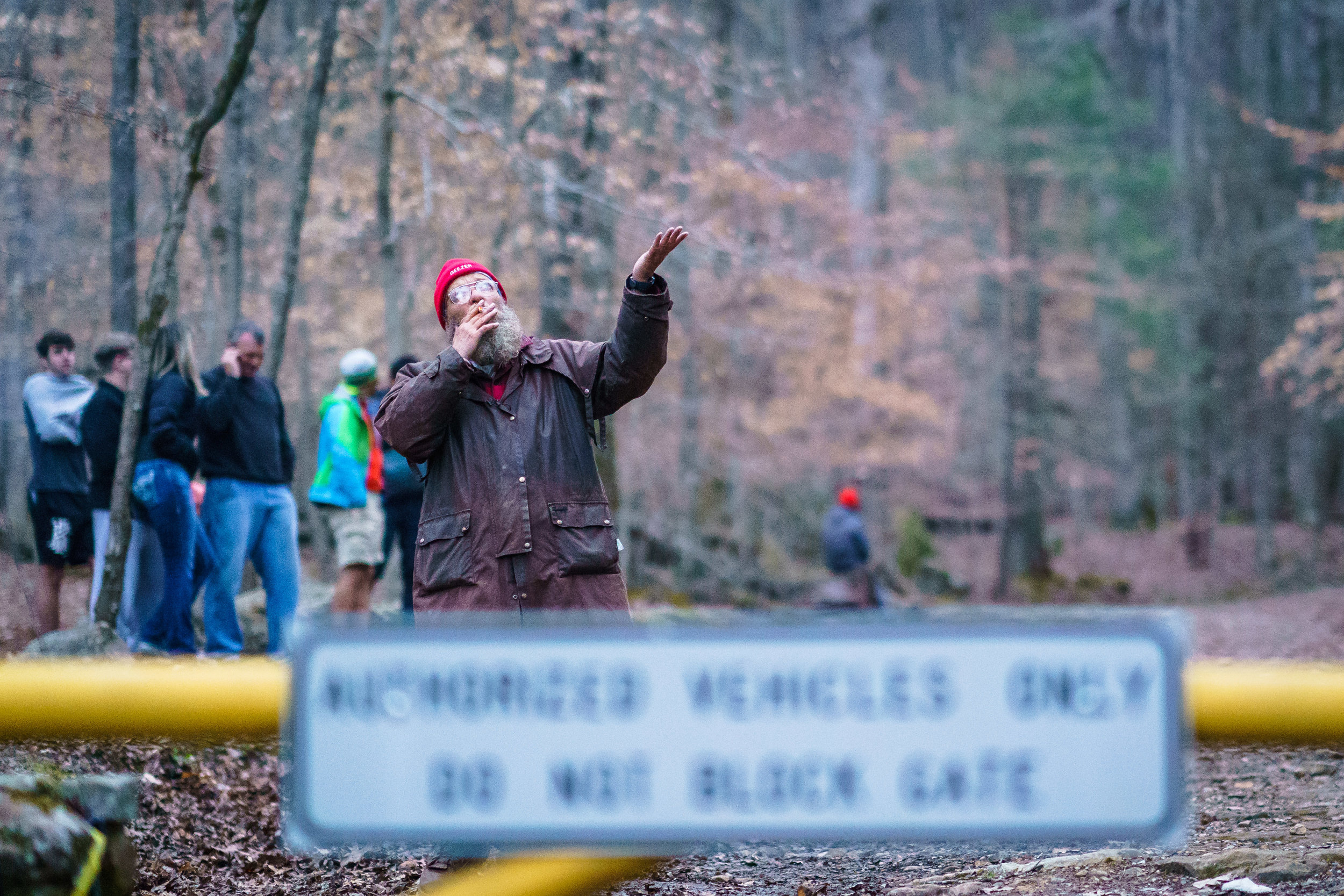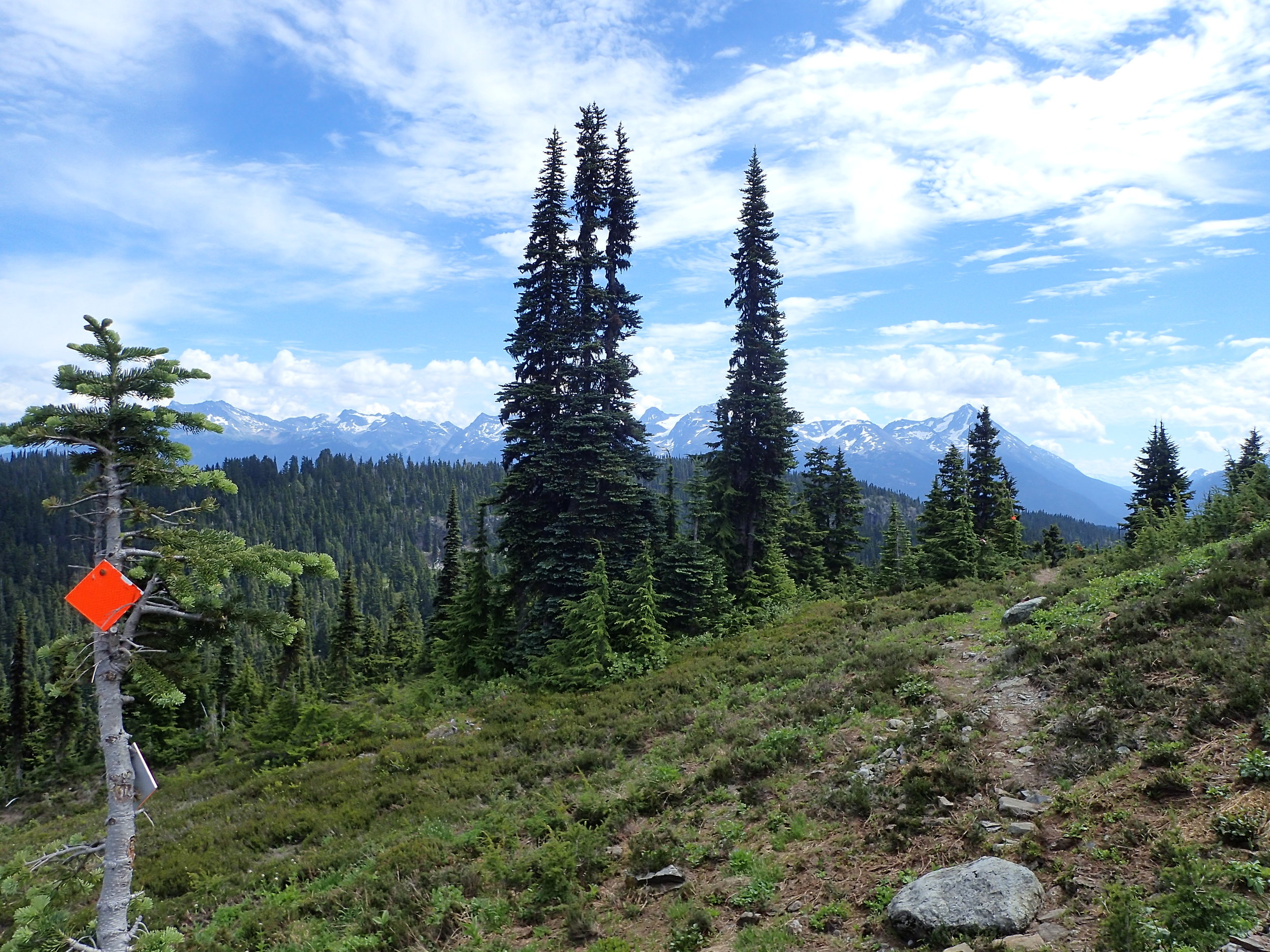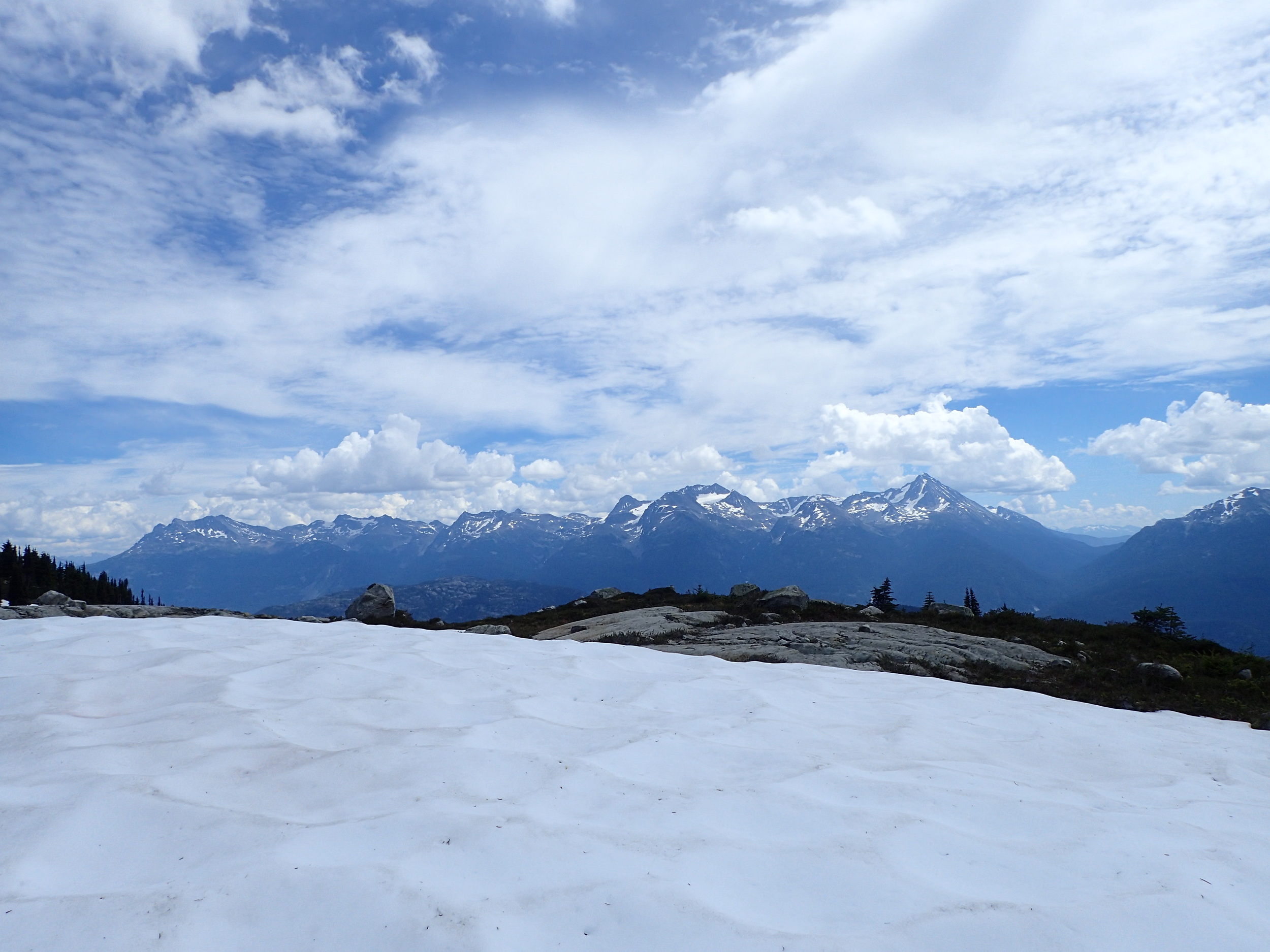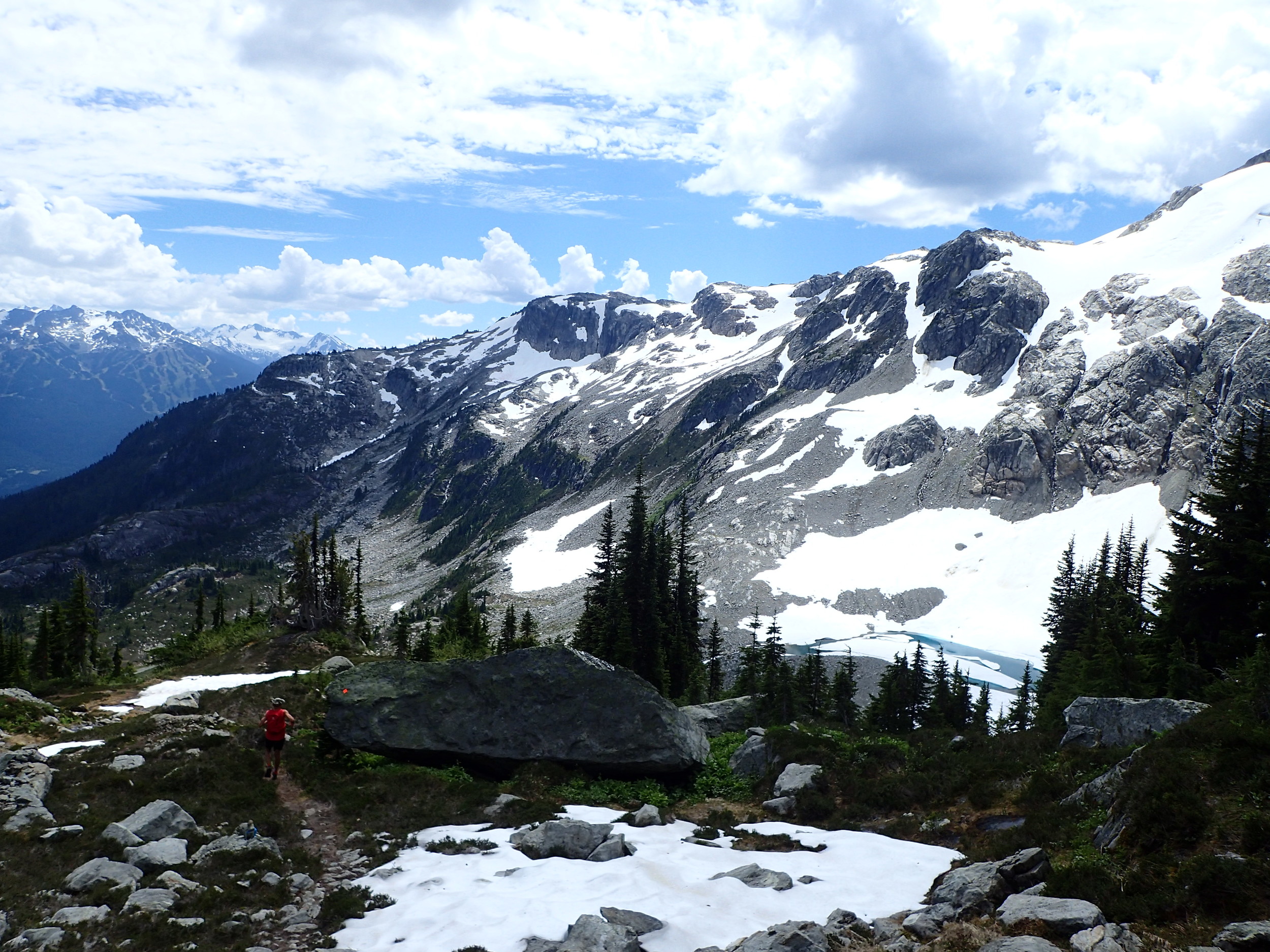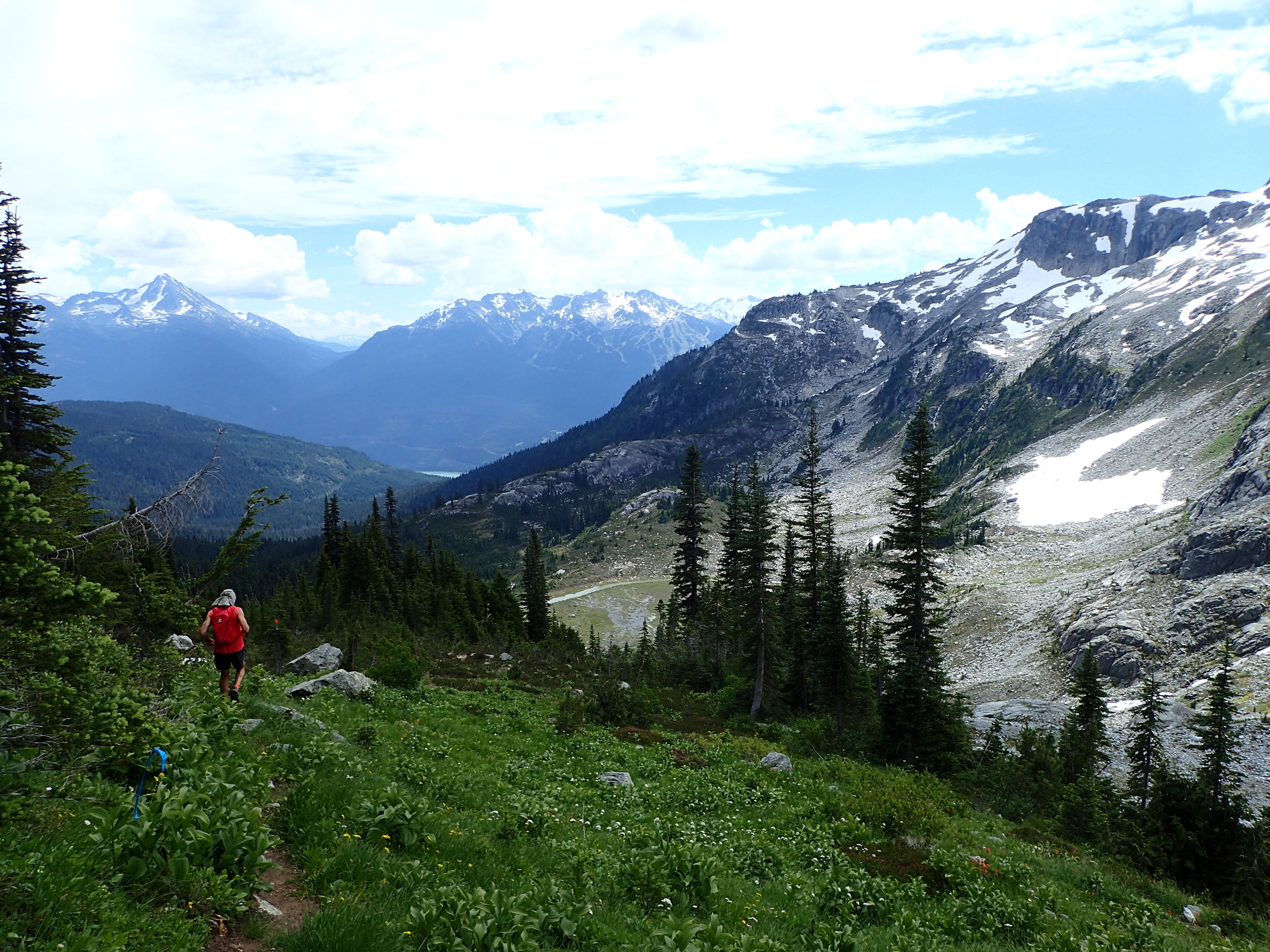Friday arrived in no time and before we knew it the map was out and things were getting real. There were three changes to the course for 2018, two of which favoured the runners in terms of appearing to be slightly faster than the previous book locations, whereas one book location was most certainly much longer than the year prior. In the end I guessed this 2018 course to maybe be in the range of 7-12 minutes longer per loop, or 30-60 minutes harder overall.
The total climbing stats for 2018 would come in at 13,484ft per loop, or a whopping 67,420ft for the full pull. If Laz adds one more 500ft climb to the mix in the coming years, the Barkley will be a 70,000ft race! Read that again and let that sink in.
The Conch Is Blown
Save for our fire alarm evac on Tuesday, I’d slept great all week, and thankfully Friday night proved no different. I passed our just after midnight, after already being in bed for three hours, and likely ended up with about six hours of reasonable sleep. When I awoke just after 7am I eased into the morning and the conch was eventually blown at 8:33am for a 9:33am start. Jamil Courey and I were the first two runners to greet Laz as we awaited our official “Barkley watch”, the $10 Timex piece that is the only watch you are allowed to carry for the race. This watch is set to “race time” or “zero time” so when the 24hr watch goes to zeroes you start running. When the watch hits 12:00 on your third day, time has officially expired (60 hours).
My strategy was simple going into the first loop, go slower to be faster, get through it mistake free, refresh my memory as to the nuances of the course and go from there.
Just prior to the start I’d somehow managed to bump my watch and it reset the seconds back to zero. The seconds must’ve been counting up in the 50’s, about to turn over to a new minute, because my watch showed the race starting about a minute early, and I was scrambling just a bit to get through the pack at the back and up near the front as we all streamed past the yellow gate. We were about ten minutes into the first climb when I questioned someone else as to the start time and then realized my watch was out by over a minute. Runners know that the watches will be out vs the “master watch” that Laz wears but only by a few seconds over the duration of the 60 hours, and by coincidence when I initially compared my watch with Laz’s we realized my total time variance for the 60 hours would be seven seconds, meaning my watch, set to race time, could not go above 11:59:53 on day three. Not that any of this ended up mattering in the end, but it is just another example of the attributes that make the Barkley so unique.
As we worked our way up the first climb, on a few miles of candyass trail, this was the slowest I’d ever started The Barkley, following my race plan perfectly. In the previous two editions a lead pack pushes off the front and crests the first climb in about twenty-five minutes. We were closer to thirty minutes and there were at least 8-10 runners in front of or around me. We snagged our first page and proceeded to drop off the mountain towards book two. The race always seems to splinter here, as runners scramble for position after the first backlog of pages being pulled, and this year was no different. By the time we intersected the river below I’d found myself at the front of the race, earlier than anticipated, and already down to a group of about six.
The more eyes the better, was also something I’d been telling myself. No need to shrink the field until we’ve at least collectively located the new books together. I had mentioned to Guillaume Calmettes a day earlier that I intended to up the pace a bit after book seven, which in the clockwise direction would be the third and final “new book location”, but until then I saw no reason thin out the field.
Our now lead group nailed book two, thanks in no small part to Nova Scotia’s Jodi Isenor (a previous fun run finisher) and as the book gets handed around to pull pages I glance at the cover. The book is titled “Six Seconds” and I temporarily lose my mind. “F@#K YOU LAZ!!” He is an expert at mental warfare. As we started up “hillpocolypse” which in the clockwise direction is the first off trail ascent of the race, our group consisted of myself, Jodi, Guillaume, Jamil, a Scottish bloke named Ally Beaven and another overseas runner whose name was James. Before we topped out on this climb we’d be down to four runners and I’d be down to one trekking pole, somehow managing to snap one of my poles within minutes of pulling them out.
Jamil Courey certainly knows the course well and he was a huge asset as we proceeded along without issue. When we arrived at book five, the biggest change of the year, he zoned in on it like a hawk. It was really impressive and I knew my decision to not forge on was paying dividends.
What was really surprising to me was how well Guillaume know the course. He’d done his homework, having travelled out just a month or so earlier to run all of the trails you’re allowed to scout outside of race weekend, and Guillaume took the lead on some sections as he was in fact the person in our group who’d been over some of the terrain the most recently. All in all, we were moving right along and accomplishing exactly what I’d set out to do, which was to put in an error free first loop.
At book seven, the third and final alteration to the 2018 course, I went right to a set of trees that matched the description, had a poke around, saw nothing, and began moving away from there, then Jamil comes in just behind us, goes to the exact set of trees and pulls out the book. This is one of the things that people fail to recognize about this race, you can literally be standing on top of the book at times and you still won’t see it unless you dig for it. Books are buried in tree stumps, under rocks or just anywhere that makes it as hard to locate as possible. Jamil informs us that “this was the location of this book in 2014.” Cool, good to know. Okay, all new books have now been established and it’s mostly smooth sailing in regards to my own course knowledge.
For the first time in my three attempts, the course goes up the infamous “Testicle Spectacle”. Over the past two years the book near Testicle has been off to one side of it, in 2016 it was in the left hip, if you will, and 2017 was in the right hip, so I’ve never done this route in its entirety, and I’m excited as it feels like a right of passage.
It had rained overnight from Friday into Saturday and we were warned of an incoming “weather event” from late day Saturday into Sunday. As we started up Testicle the hill just continues to slop away from under us. It was a complete pile of mud and not a single inch was gained without slipping backwards to some degree. I was no longer enjoying my right of passage. The thrill of the new climb had lasted all of, well, six seconds really.
We crested the climb, now down to three, myself, Guillaume and Ally, and proceeded towards book eight. My line was off a bit and sure enough captain consistent Jamil catches back up to us. I lead us all up Danger Dave’s Climbing Wall and the onwards towards Rat Jaw.
Rat Jaw is a bitch. There is not a single picture ever taken of Rat Jaw that can accurately display its gradient and inherent challenges. Every year pics are posted from Rat Jaw and inevitably people following along online think “oh that doesn’t look so bad” “oh hill x-y-z that we have here locally is at least that steep.”
We were in for a special treat on Rat Jaw this year as the recent rains, not just overnight but over the last few weeks, had turned its clay like dirt into a vertical skating rink. No matter how fast you are moving up until that point, or how strong you might feel, Rat Jaw is am absolute soul destroying grind from bottom to top. There is an old cable that lays on the ground along some sections, and this cable becomes a life line. You drag yourself up this slope, one agonizing step at a time, and then you hang on for dear life on the downslope, using the cable as you would a climbing rope that’s been strung over a rocky slope to allow for safe passage.
By the time we’d topped out it was but myself, Guillaume and Ally. We might have been a few minutes slower going up than I’ve been in previous years on the first lap, but we’d exerted so much more energy in doing so. It was a fight for every step and for the first time in my three years at the race I actually had the thought, on the first lap, of “I can’t even imagine the effort that’ll be needed to get up this thing on laps three, four and five.”
Bottles filled, page pulled and careening down the mountain. I slam hard at one point but immediately bounce back up and keep running. My tricep is screaming at me and I think it’ll dissipate, but it never does. I attempted to arrest the fall by leaning into a pole and ended up straining my arm. Even as I type this almost a week later the tricep still has a ways to go to get back to 100%. Only at the Barkley are you as likely to experience an upper body injury as you are a lower body injury. The amount of upper body strength needed for the Barkley is often underestimated, and it’s a whole-body workout for two and a half straight days.
We went through the prison, up and over the final two climbs and down into camp after what could readily be described as a perfect first lap.
With about a mile to go, Guillaume says to me, “so how long do you think you’ll spend in camp?”
I’ve had a year to digest last year’s failure. I’ve watched Ethan Newberry’s documentary about it 17 times on the big screen (WhereDreamsGoToDie.com). I do not see six seconds as being the difference, I see the better part of 45 minutes that could have been improved upon. Goal #1 for 2018 was to be more dialed in camp, to be better organized from the start, and to “leave no doubt”. Leave nothing for chance. Be better, from lap one through lap five.
Laz changed the rules around camp for 2018 and each runner was allowed but two crew members. This meant Linda +1. This meant no Ethan, no Kim and no Shaun Martin. In the end my crew ended up being Linda + John Kelly, and we shared John Kelly with another runner, the aforementioned Jodi Isenor. John would have his hands full, crewing for two people, but there was no better person for the job. I was honoured that he’d dedicate his weekend towards my own hopeful success. My parents were staying at a hotel in Oak Ridge and would come to camp for Interloopal, taking Reed off of Linda’s hands so Linda and John could focus on the task at hand. Every – second – counts.
Me to Guillaume, “five minutes best case, seven minutes worst case.”
Guillaume, with a pause…”okay”.
We hit camp in 8h38m.
In 8h45m, after a full gear change from head to toe, socks, shoes, shirts, lube, everything, I was sprinting back out of camp. It was, easily, the best I’ve ever felt after a lap at the Barkley. Things were going perfectly.
I spotted Guillaume and Ally scrambling to get to the gate to claim their second lap bib, as I was exiting the campground. I did not have a desire to move on without them, I had a desire to finish the race. Every – second – counts.
There was about ninety minutes of daylight remaining when I departed camp on lap two. For 2018 the direction of the loops was set as;
1. clockwise
2. counter
3. counter
4. clockwise
5. choice
The Second Lap - Counterclockwise
I put in a good push to get up and over the first climb, claiming book #13 (or the first book going ccw). As I dropped down the first off trail section of lap two I thought it about the right time to pull out my headlamp. The weather, as had been predicted, was setting in and it was foggy, cold and starting to rain. They were calling for up to 30mm of rain. The “weather event” had begun.
I clicked on my headlamp but nothing happened. I tried again…nothing. Tried one final time, but still zero. I always carry two primary headlamps of 350 lumens, the Princeton Tec Apex rechargeable, and a third emergency light of just 100 lumens, the PT Remix.
I attempted to fire up my second Apex light but it too was dead. This had never happened before. I pulled out my backup, backup light and turned it on. There was no way in hell that this emergency light was sufficient for navigating in the dark, and I didn’t even have spare batteries for it. I was far too far out of camp to head back and fix this. The sun was all but gone, the fog had rolled in, and my race, was about, to end…
“GUILLAUME! ALLY! GUILLAUME!! ALLY!!”
I knew they’d be close, but if I was unable to locate them I’d be hooped as there were no other runners close to us at this point.
Thankfully Guillaume started whistling back to me and we worked towards each other through the dense laurel brush.
“Oh my god, thank you! My headlamps are both dead, do either of you have a backup main light?”
Neither did but both offered what they did have. Nothing added up to a working solution though (extra batteries specific to each lamp) and I was forced to continue with my “AAA” powered Remix. I need to explicitly state at this point that my headlamps were not malfunctioning. It was not a product issue but a user mistake. We as a crew made an error and learned a valuable lesson in real time. The lamps were both dead, but through no fault of the manufacturer.
Myself, Guillaume and Ally were a team again, whether they liked it or not 😊
I lead us to our second book and as we made our move towards the third book a pack of runners headed our way at the end of their first lap. I asked everyone if they had any light source or “AAA” batteries to spare and a TN runner was kind enough to spot me his emergency light which was also “AAA”. This would at least get me closer to being able to cover the 12hrs of darkness we were now confronted with. (if you are reading this please message me so I can get your light back to you)
As we navigated towards our next book the epicenter of the storm started to unleash on us. We had curtains of rain rolling over us and visibility was down to about a foot or two at most. Neither Guillaume nor Ally had ever been on the Barkley course at night before, this was their first counterclockwise loop, we were in a rainstorm, on a pile of mud, in the Tennessee wilderness, with temperatures in the single digits, and their fearless leader had 100 lumens of light to work with.
The death by a thousand briar cuts had begun.
We blew this book in significant fashion and by the time we did locate it we were all soaked through to the bone and on the cusp of hypothermia.
“Guys, put on every layer you have, this is not going to get any better and we won’t regret it if we somehow end up being a smidge too warm on the next climb up Rat Jaw.”
I was now wearing a long sleeve merino wool base, a short sleeve tech shirt, and hooded wind jacket, a waterproof jacket, a buff, a toque, I had a second thicker pair of gloves that I switched into, I had on a short pair of tights under a full pair of tights, and now pulled on my waterproof pants. On the bright side, my pack was now much, much lighter.
Guillaume Calmettes is certainly one of the most positive people you’ll ever meet, and he exclaimed with a smile, in his thick French accent, but with perfect English “ADVENTURE!”
Ally Beaven possessed a great sense of humour, the ability to tell a good story, and most importantly he understood the golden rule of not complaining out loud.
I would have classified us squarely in the middle of being a “Dream Team” and “The Three Stooges”.
We dropped down towards the prison in the most deranged conditions I’d ever witnessed on this slope. It was like the ground was no longer solid but had somehow decayed into a foreign, much more malleable surface. If I could not visually process that I was moving across a supposedly solid slope I would have guessed it to be ice and snow underfoot. Each time we slipped, and we slipped plenty, we’d go for a ride downslope of about five to six feet before coming to a halt, often against a rock or tree, and then we’d be forced to pick ourselves up and attempt a few more feet of actual forward progress. It reminded me all too much of this:





